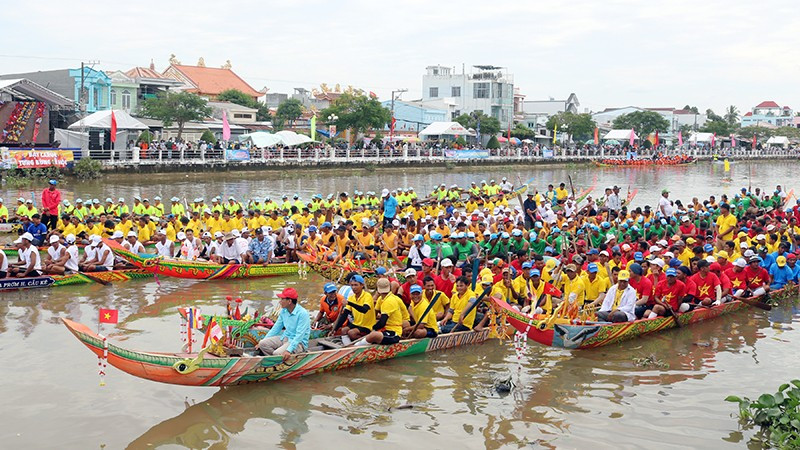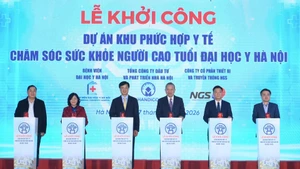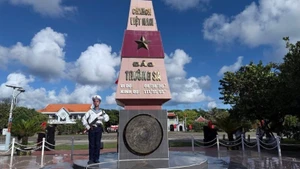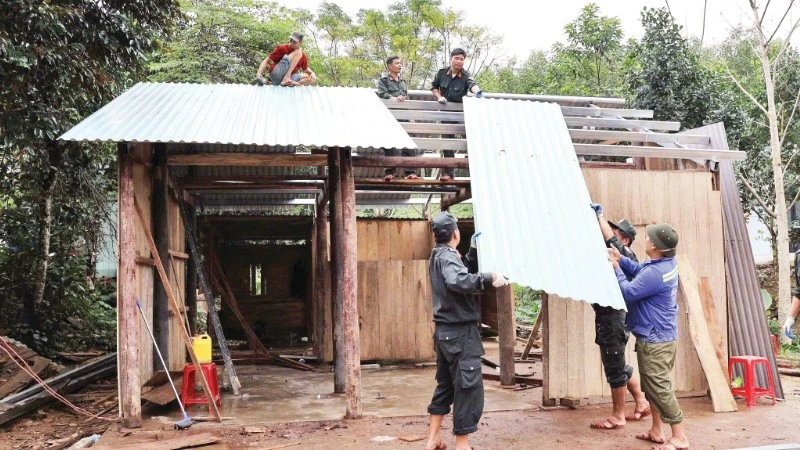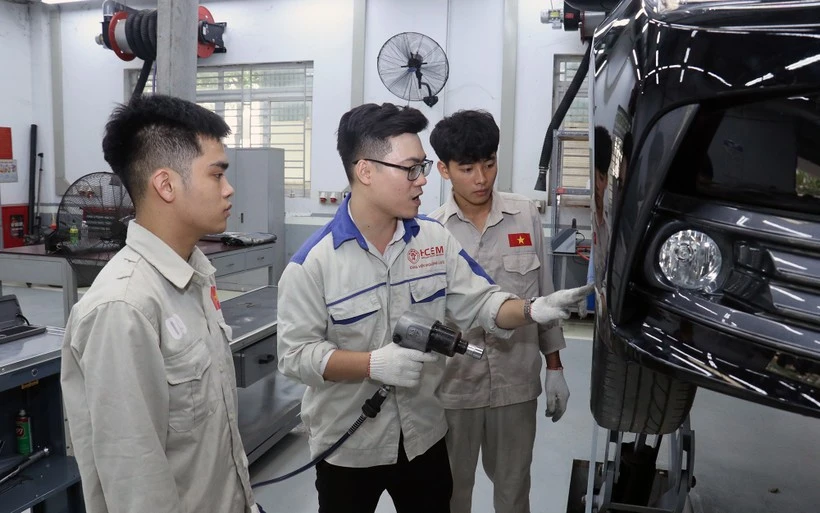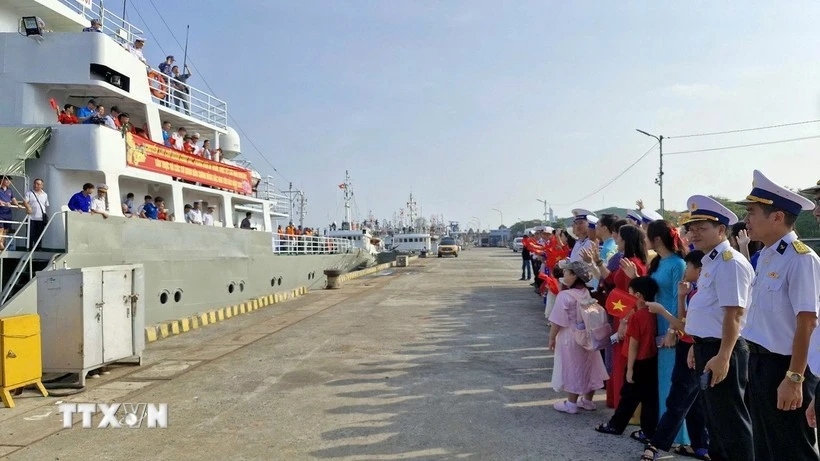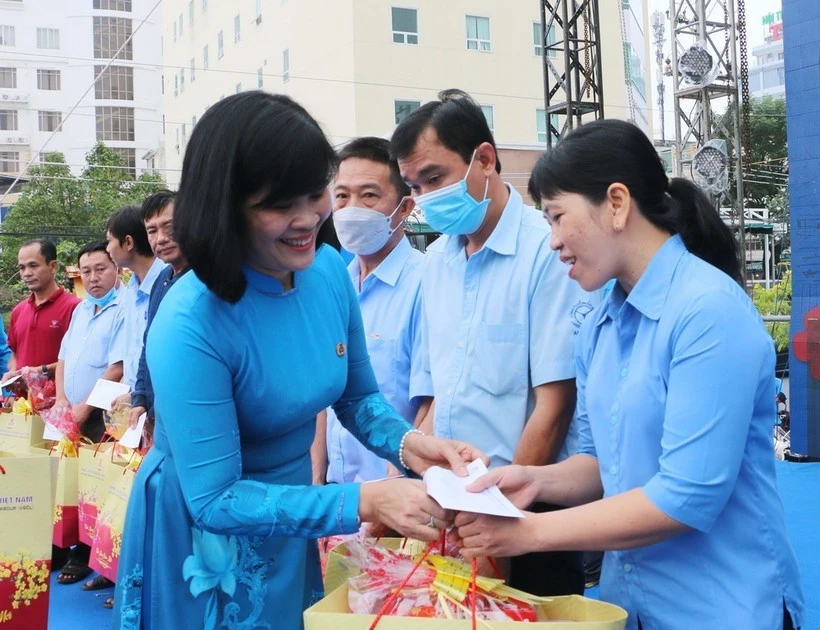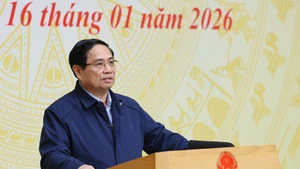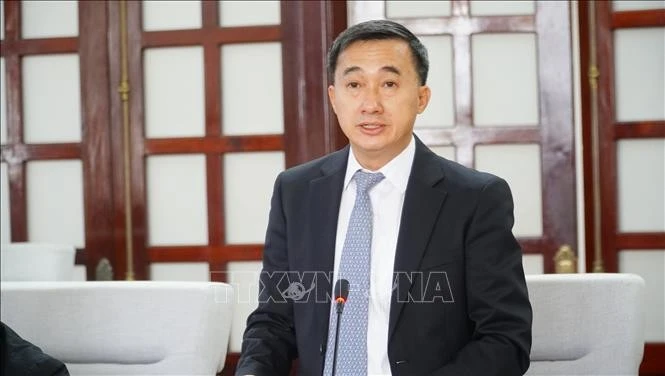Tra Vinh Province has a population of more than one million people, with Kinh, Khmer, Hoa, and Cham ethnic groups living together. Of the total, there are more than 318,200 Khmer people, accounting for 31.53% of the province's population.
Thanks to the effective implementation of policies on socio-economic development and poverty reduction, along with the efforts of the local people, Tra Vinh's GRDP growth in 2023 reached 8.25%, while the scale of the provincial economy was estimated at 83.37 trillion VND.
Average income per capita is more than 81.7 million VND. The province's total budget revenue reached 17.17 trillion VND.
The province has also gained significant results in rural building and poverty reduction with poor households accounting for only 1.19% of the total population. The poverty rate among Khmer ethnic households in the province has decreased from more than 50% in 1992 to 2.03%.
The local authorities have also attached great importance to preserving and promoting the traditional cultural and arts practices of the local Khmer people.
Every year, Tra Vinh has allocated trillions of Vietnamese dong to provide vocational training, job creation, and financial support for tens of thousands of workers and households in the province.
The province has implemented a project to provide electricity to 20,000 households, mainly of Khmer ethnic people living in the districts of Cang Long, Cau Ke, Tieu Can, Tra Cu, Duyen Hai, Cau Ngang, and Chau Thanh. The 227-billion-VND project aims to increase the proportion of Khmer ethnic households using electricity to 97.4%.
In the 2022-2025 period, the local authorities have so far mobilised more than 271 billion VN to address the shortage of residential land, housing, and production land; improve infrastructure to serve production and people's lives; safeguard and promote traditional cultural values of ethnic minorities; and develop tourism.
 |
| A celebration of the Chol Chnam Thmay (New Year) festival of Khmer people (Photo: VNA) |
Meanwhile, Khmer people account for 15% of total population in Kien Giang Province, with more than 56,000 households totalling about 237,000 people.
Kien Giang has set the goal that by 2025, the average income of Khmer people in the province will double compared to that of 2020 and the rate of poor households among ethnic minorities will decrease by 1.5-2%/year.
Dinh Hoa Commune in Go Quao District was chosen by the Kien Giang provincial authorities to pilot the National Target Programme on building new rural areas. Dinh Hoa Commune has a population of more than 15,300 people, 63.6% of whom are Khmer ethnic people.
With the determination of the entire political system and the consensus of the people, Dinh Hoa commune has transformed from a poor commune into a locality with improved economic growth and infrastructure.
People’s livelihoods have significantly improved. The average income per capita in the commune was estimated at 68.9 million VND in 2023, while the local poverty rate stood at only 3.07%.
According to Vo Minh Manh, Chairman of Dinh Hoa Commune People's Committee, the locality strives to increase per capita income from 68.9 million VND to 72 million VND/year and reduce the poverty rate by 2.5%.
Soc Trang Province currently has around 1.2 million people, nearly 36% of whom are ethnic minorities. In recent years, Soc Trang has synchronously implemented the Party and State's guidelines and policies on Khmer ethnic people.
As a result, the material and spiritual life of Khmer people has gradually improved, and the rate of poor households in the ethnic community has decreased by 7.01%.
To date, 100% of villages and hamlets in Soc Trang Province are connected to the national grid; 99.6% of ethnic minority households have access to clean water; and 93.42% of villages and hamlets have communal houses.
The healthcare network has been enhanced at the grassroots level, thus improving the quality of medical examination and treatment for local people, ensuring that all households in the province gain access to health services.
The cultural identities and traditions of ethnic minorities in the province have been well preserved and promoted. In particular, the traditional Ooc Om Boc festival and Ngo boat race have both been organised in the province on a larger scale, generating great interest from both local people and visitors.
According to Lam Van Man, Secretary of the Soc Trang Provincial Party Committee, the local Party Committees and authorities at all levels in the province always pay due attention to integrating the implementation of the National Target Programme for Socio-Economic Development in Ethnic Minority and Mountainous Areas, and the building of new rural areas with agricultural restructuring, sustainable poverty reduction, and ensuring social security.
In the coming time, the province will mobilise further resources to improve infrastructure in rural areas, and create a safe and sustainable living environment for ethnic minority groups.
